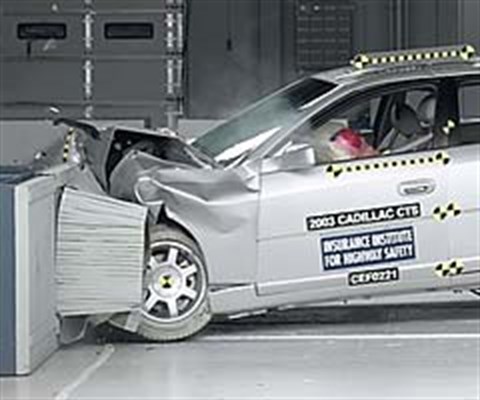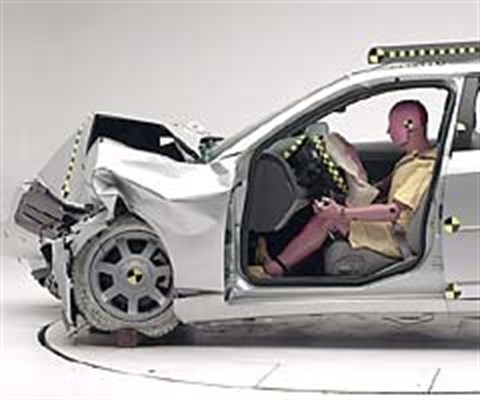Moderate overlap front: original test
Rating applies to 2003-07 models built after September 2002
Tested vehicle: 2003 Cadillac CTS 4-door
The Cadillac CTS was introduced in the 2003 model year as a replacement for the Cadillac Catera.
The Insurance Institute for Highway Safety has evaluated the crashworthiness of the CTS in two 40 mph frontal offset crash tests into deformable barriers. In the first test, the airbag deployed too late for optimal head protection. This led Cadillac to modify the airbag crash sensors on models produced after September 2002 (note: information about when a specific vehicle was manufactured is on the certification label typically affixed to the car on or near the driver door). The Institute tested a second CTS with the modified sensors, and the airbag inflated earlier.
| Evaluation criteria | Rating |
|---|---|
| Overall evaluation | |
| Structure and safety cage | |
| Driver injury measures | |
| Head/neck | |
| Chest | |
| Leg/foot, left | |
| Leg/foot, right | |
| Driver restraints and dummy kinematics | |

Action shot taken during the second of two frontal offset crash tests.

The dummy's position in relation to the steering wheel and instrument panel after the second crash test indicates that the driver's survival space was maintained well.

Loading of the head into the airbag is shown in this photo taken during the second test.

Dummies' knees and/or shins routinely hit and often damage the areas under the dashboard. These areas are smoothly contoured in the CTS.
Head restraints & seats
Seat type: Seats without adjustable lumbar
| Overall evaluation | |
|---|---|
| Dynamic rating | |
| Seat/head restraint geometry |
About the head restraint & seat test
Currently, IIHS tests apply only to front seats.
